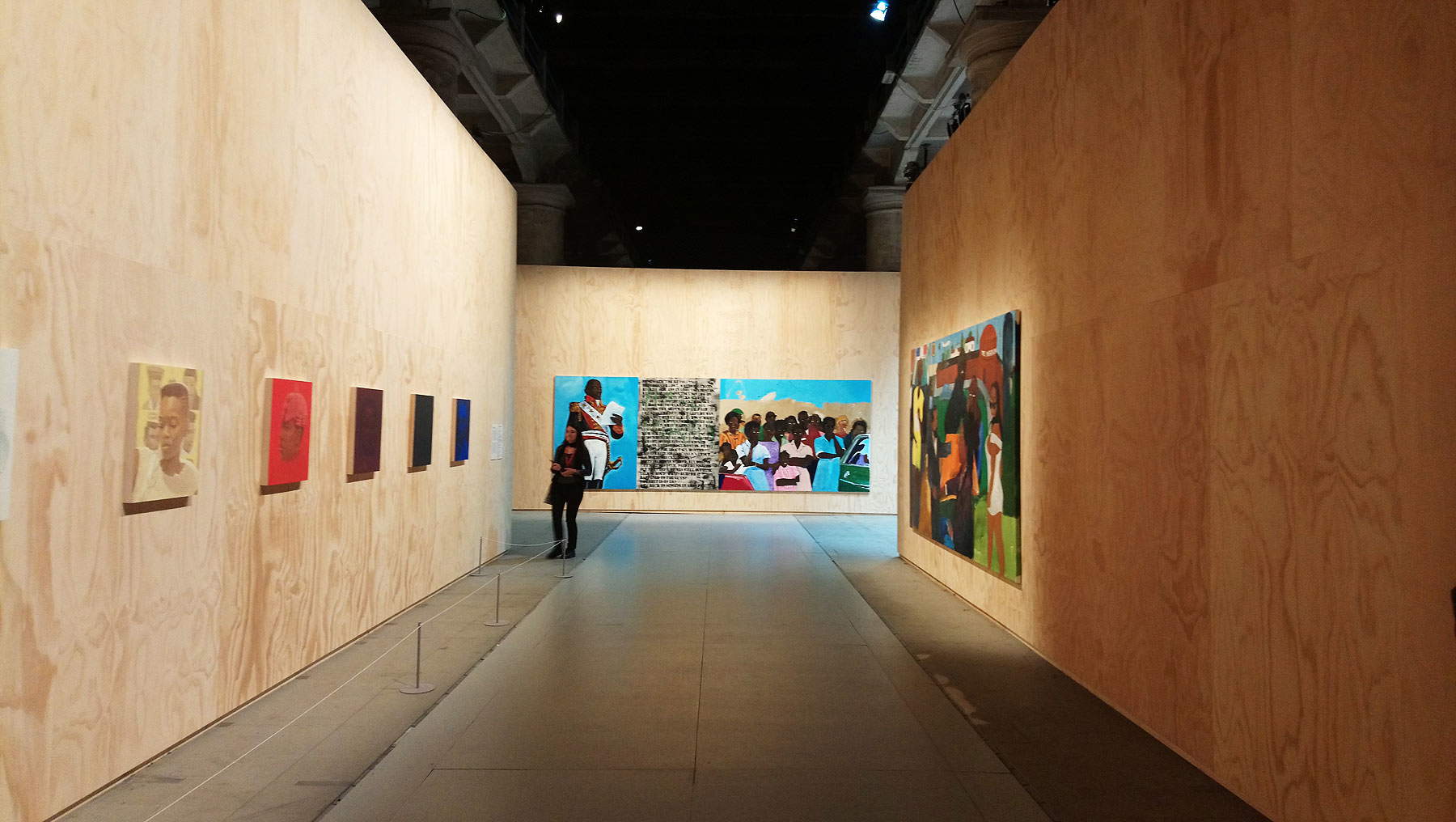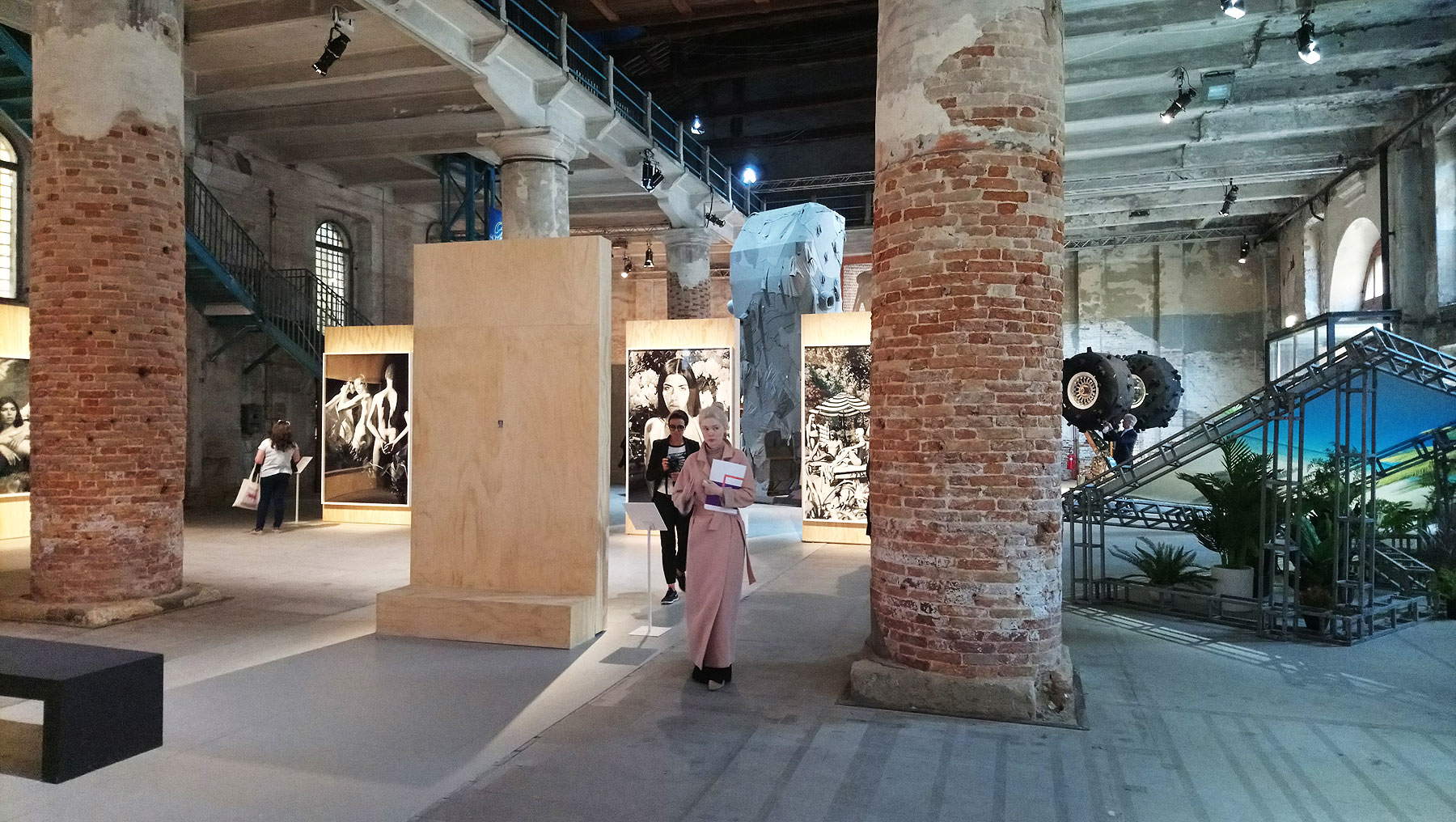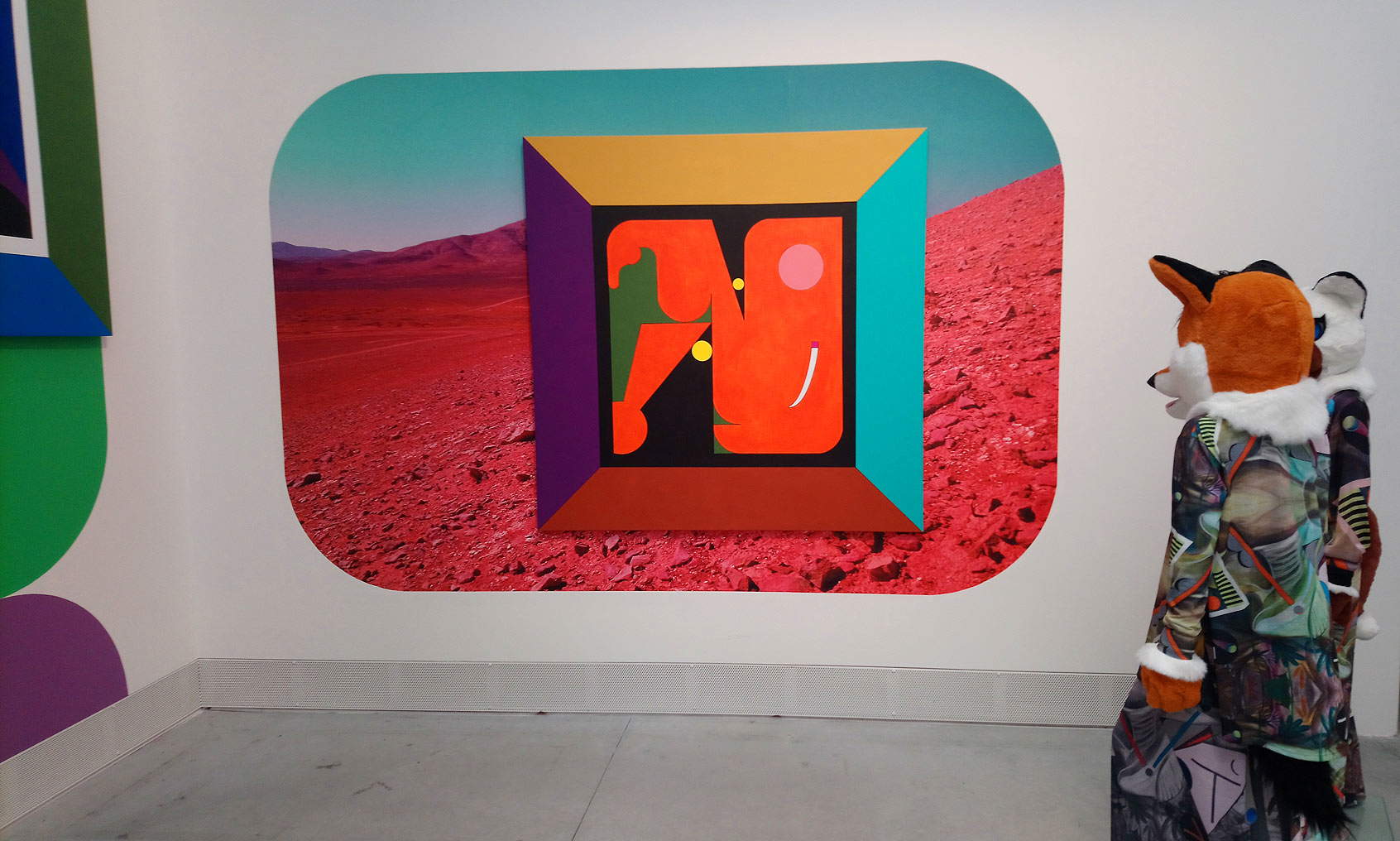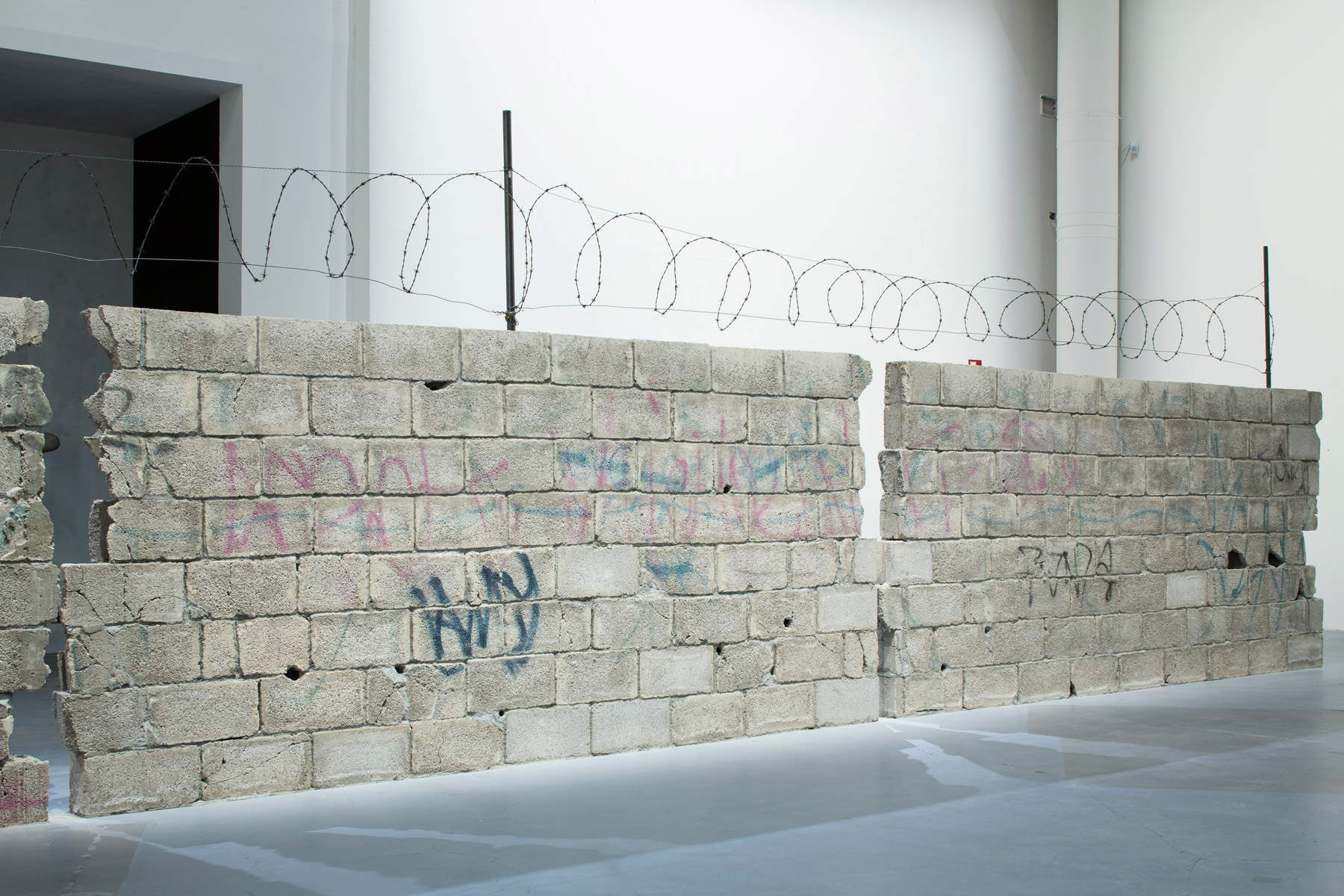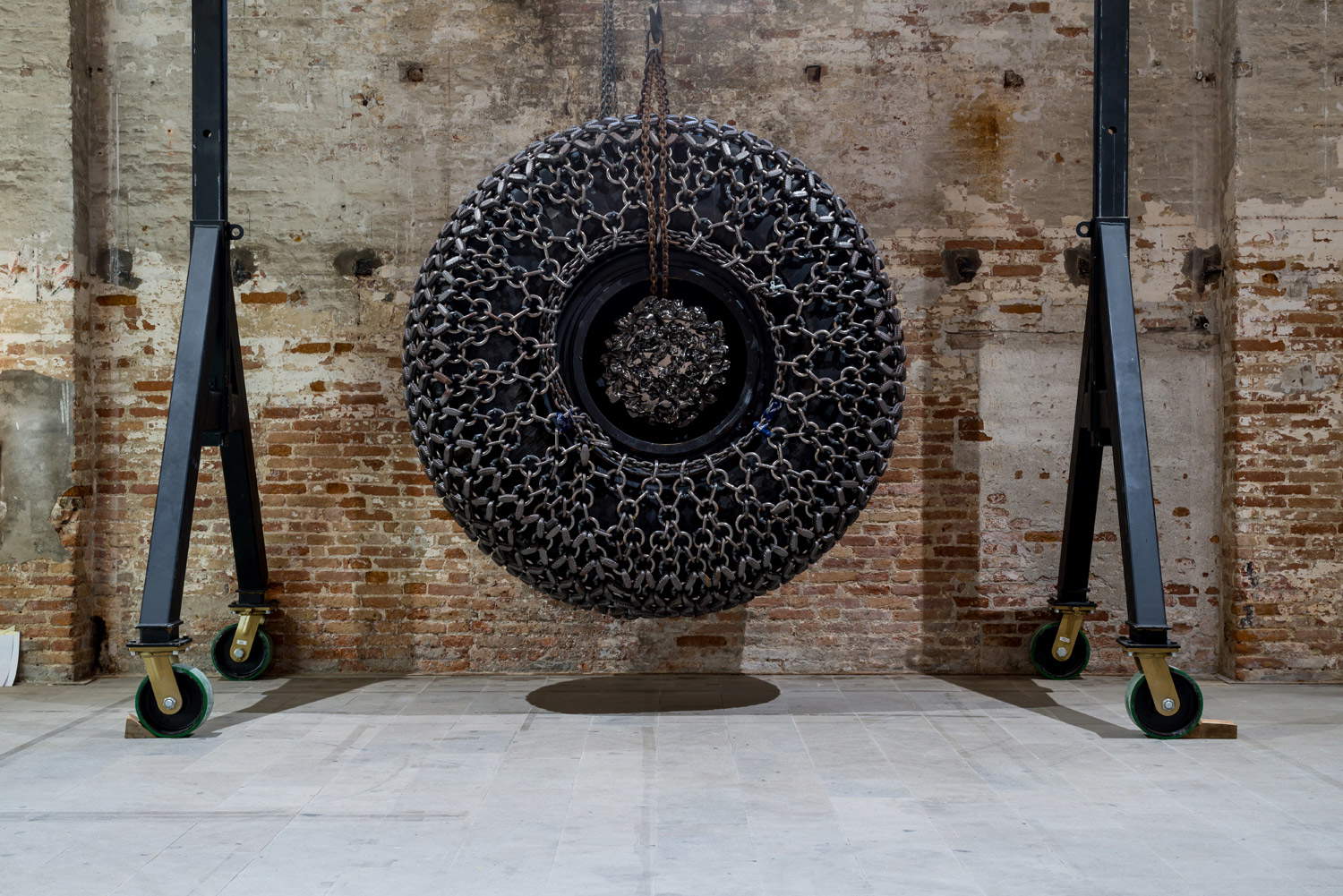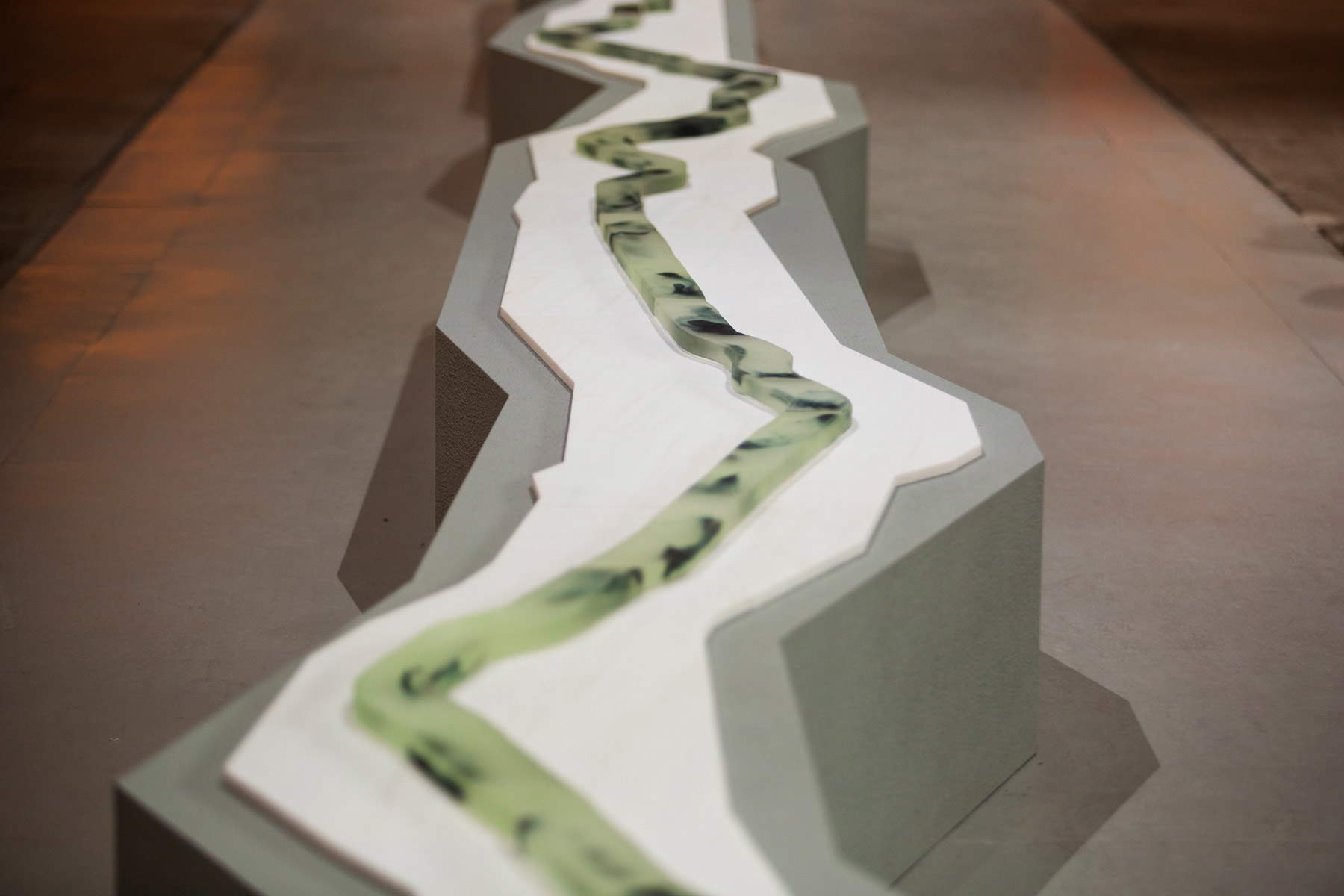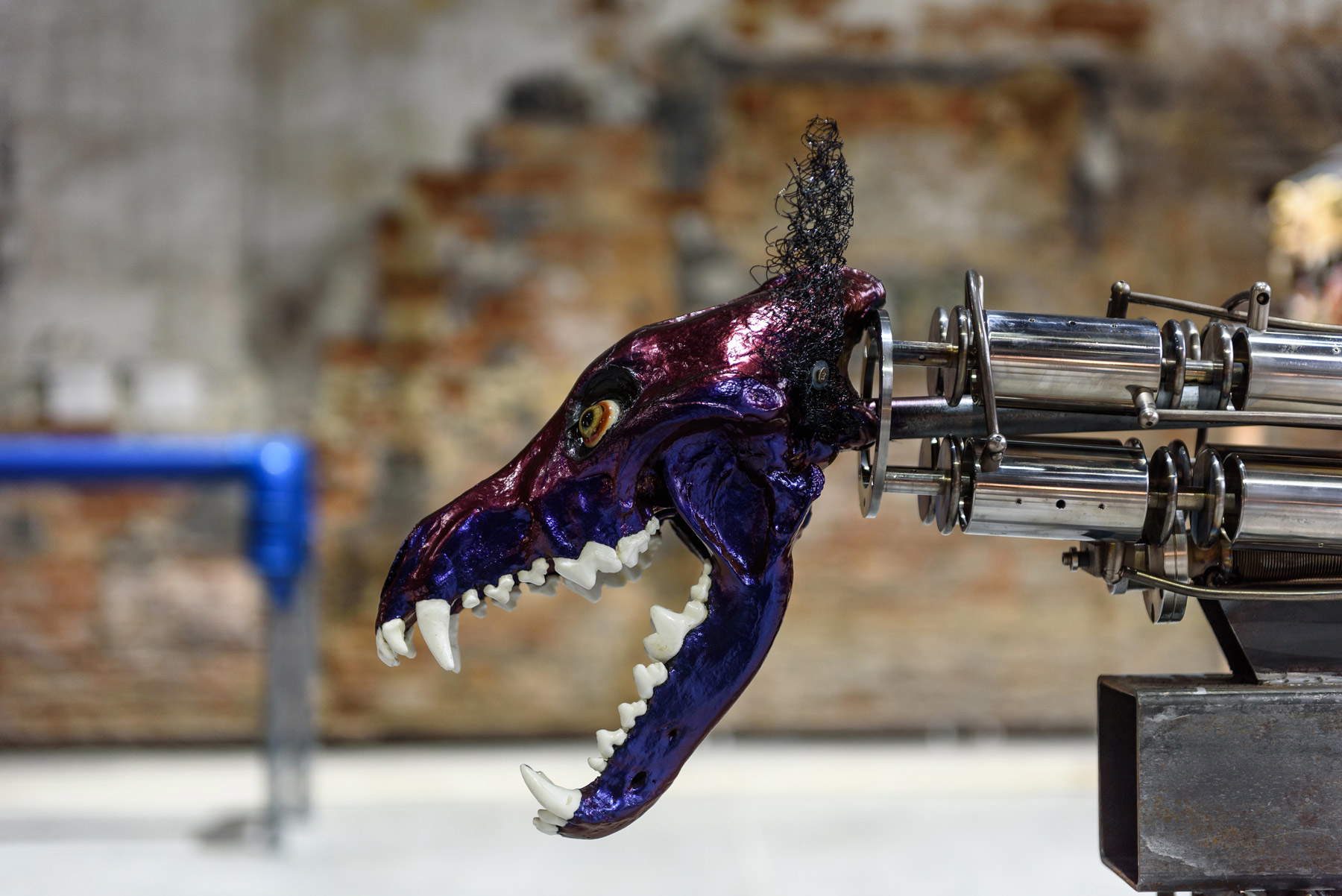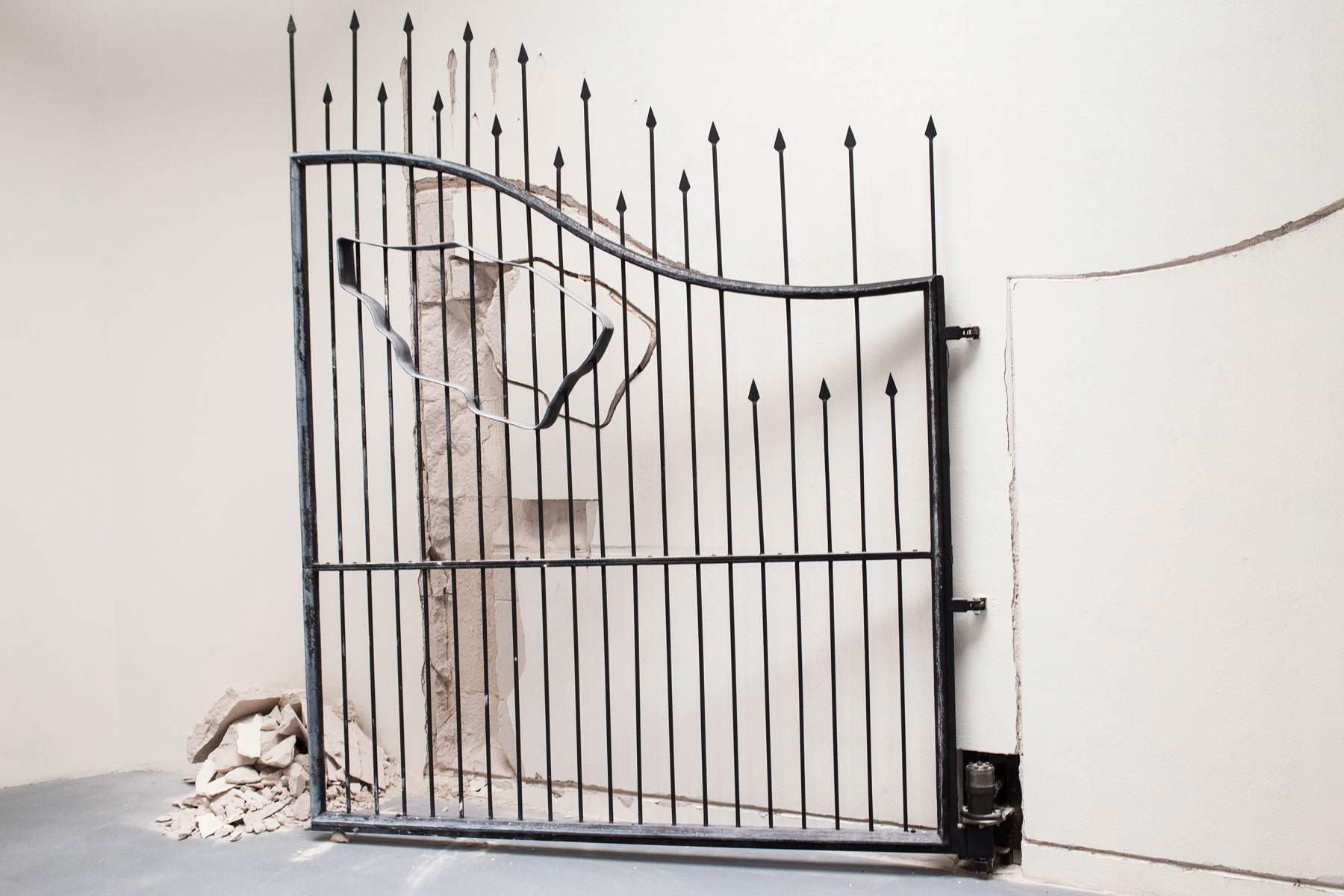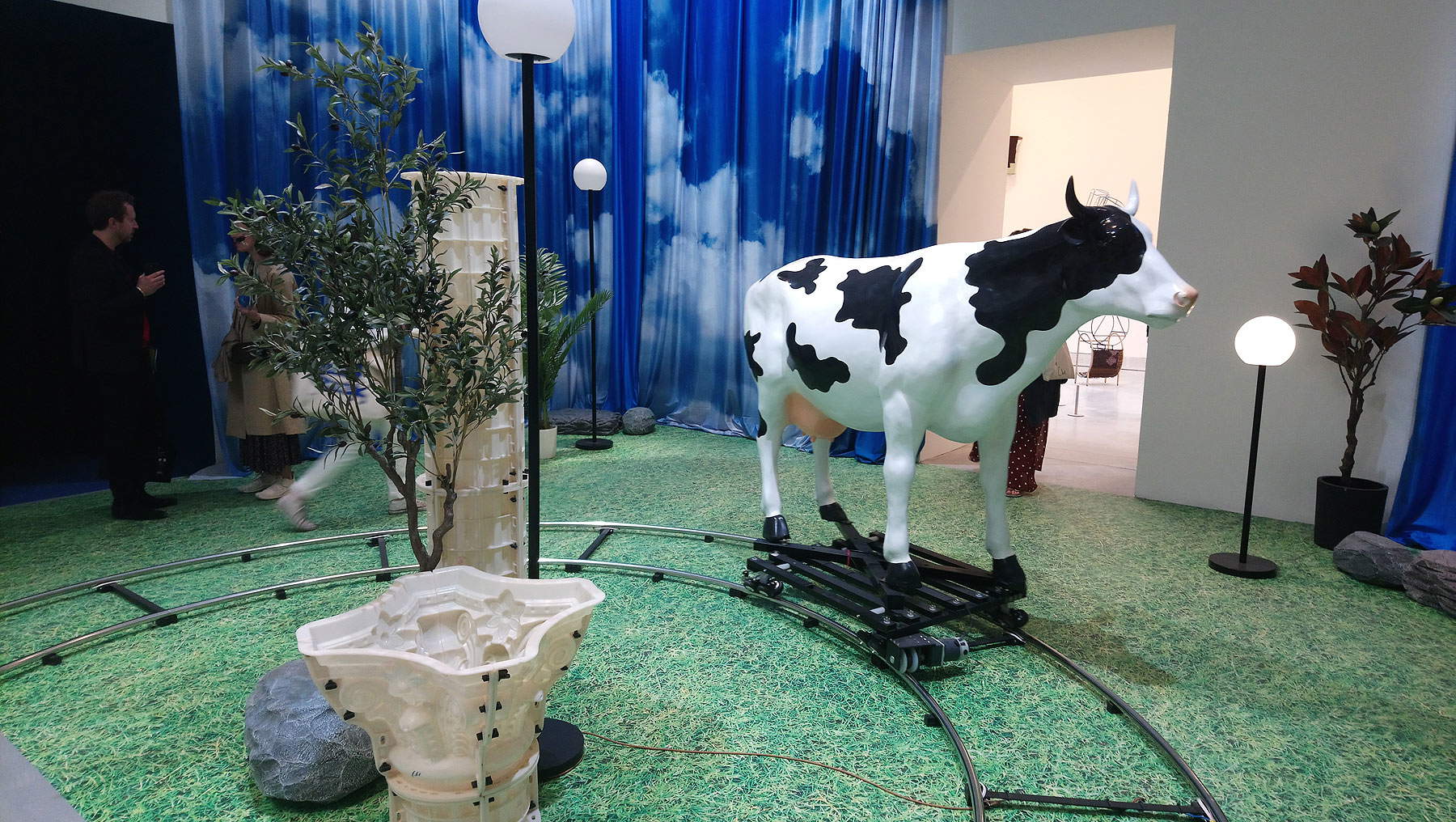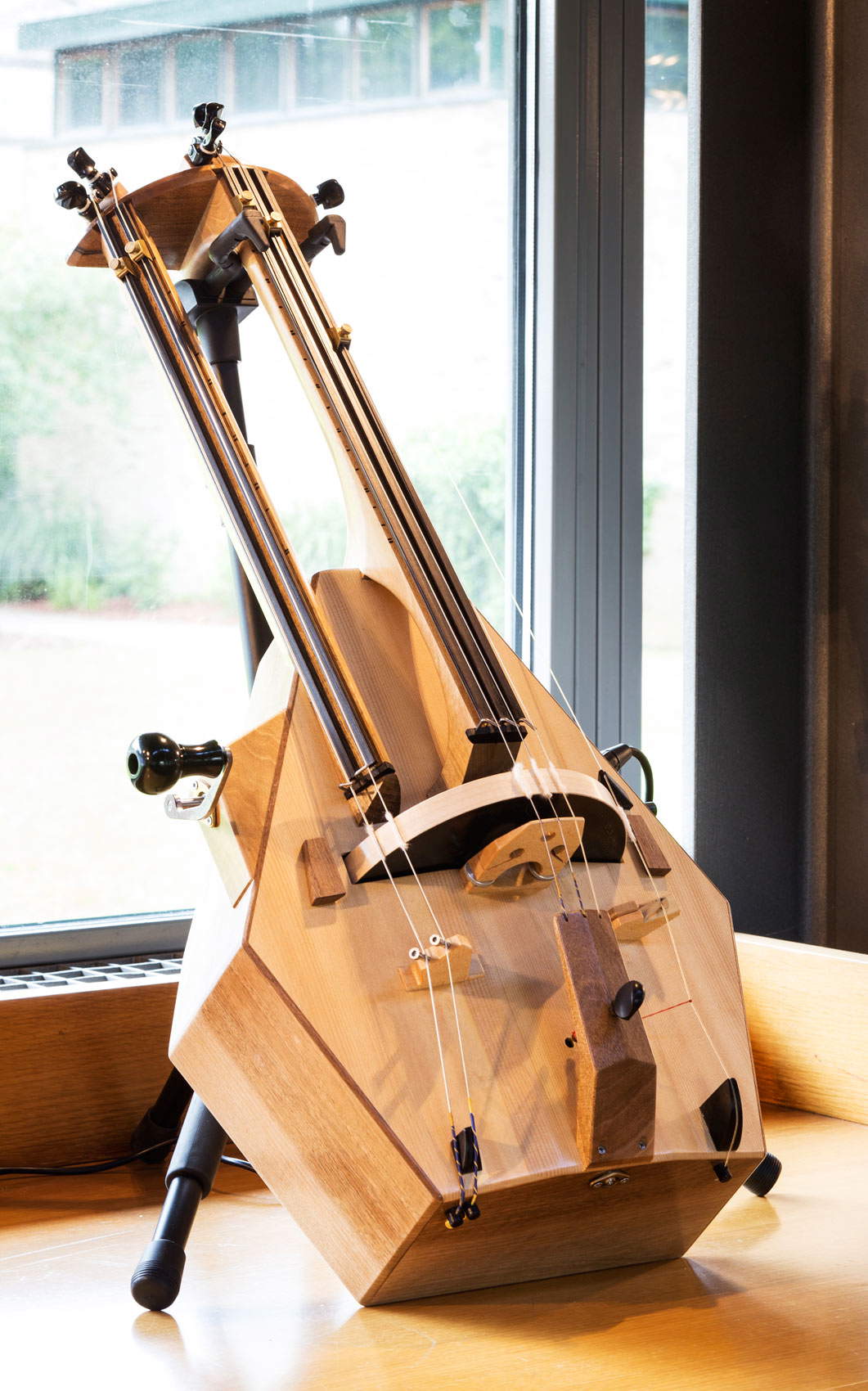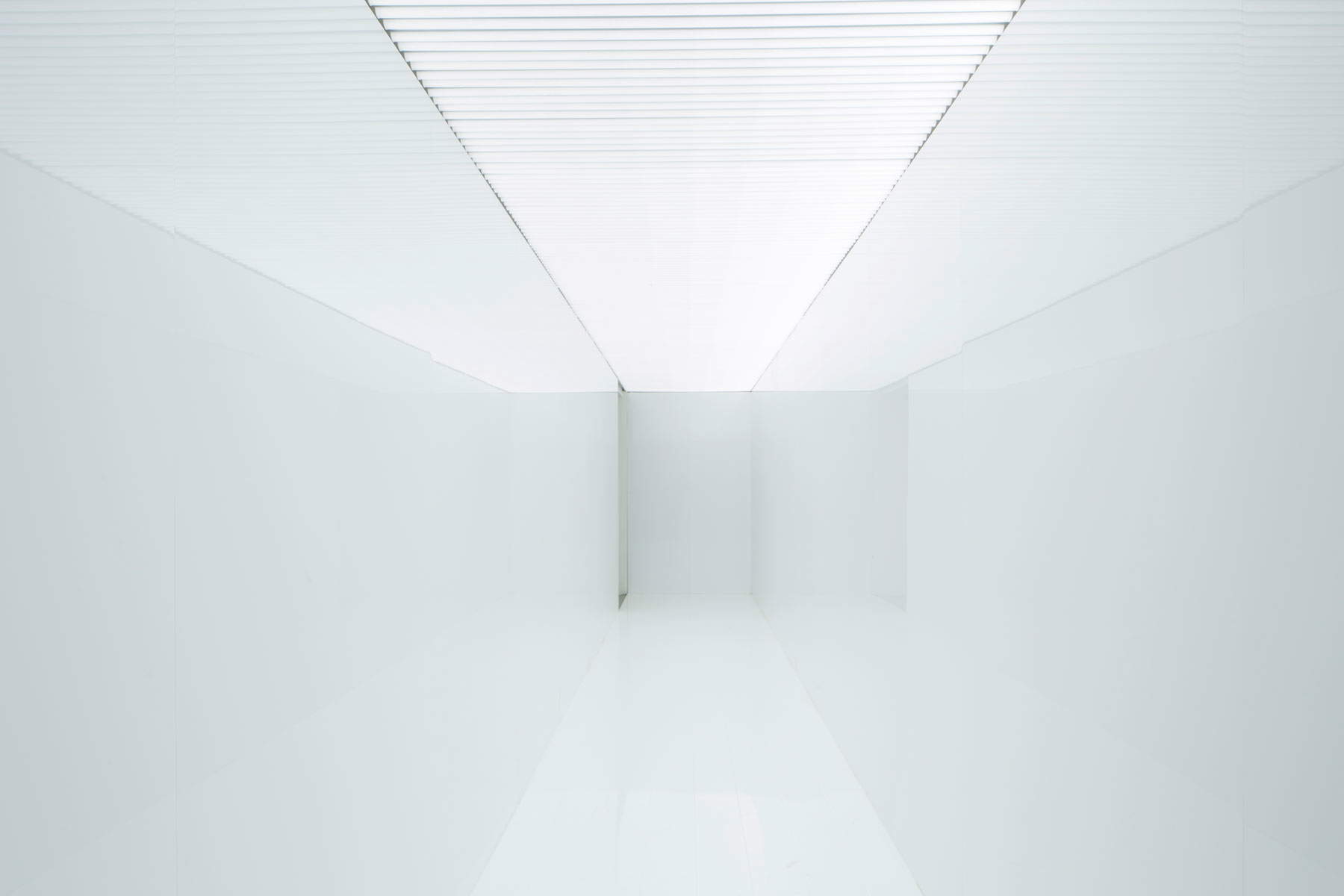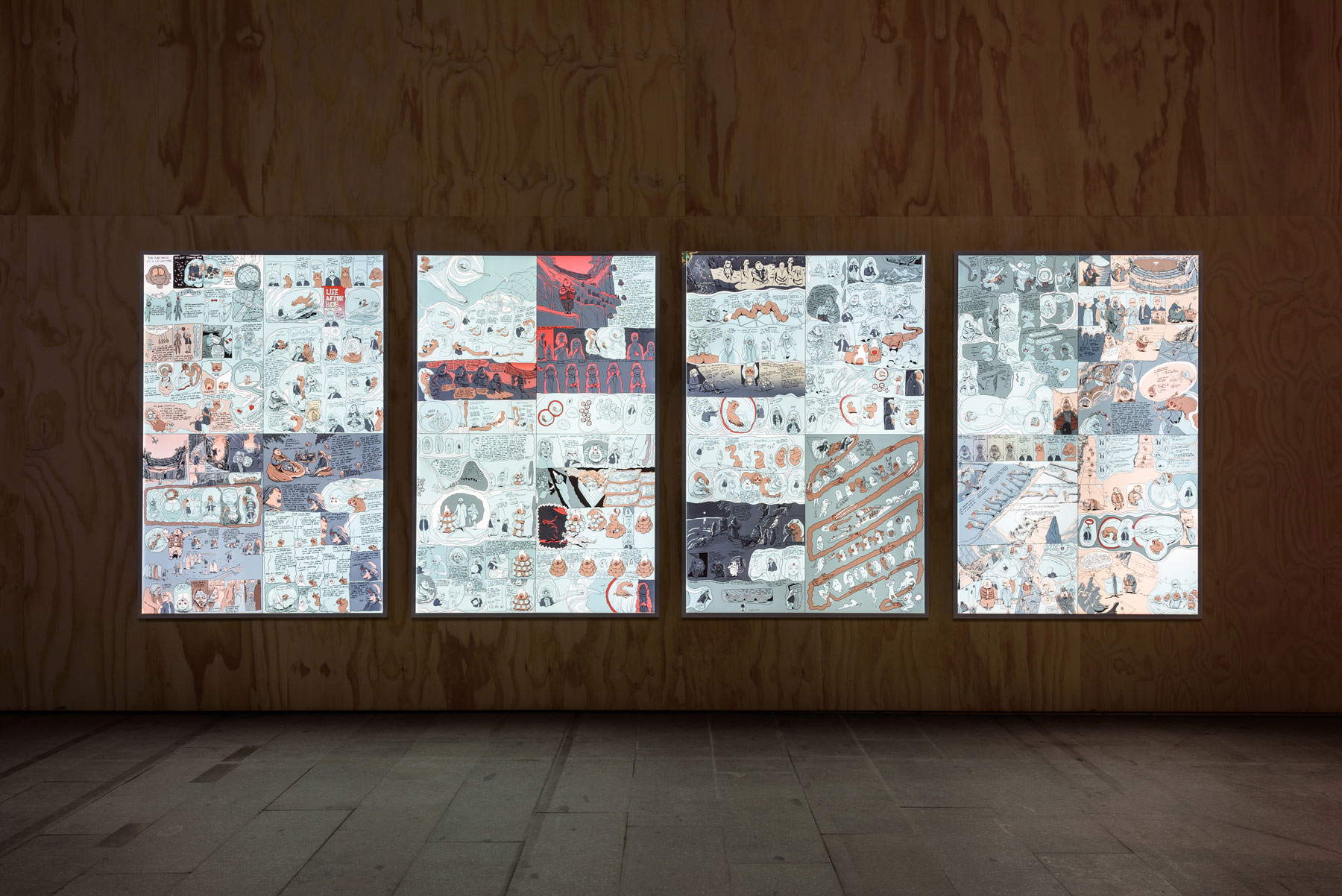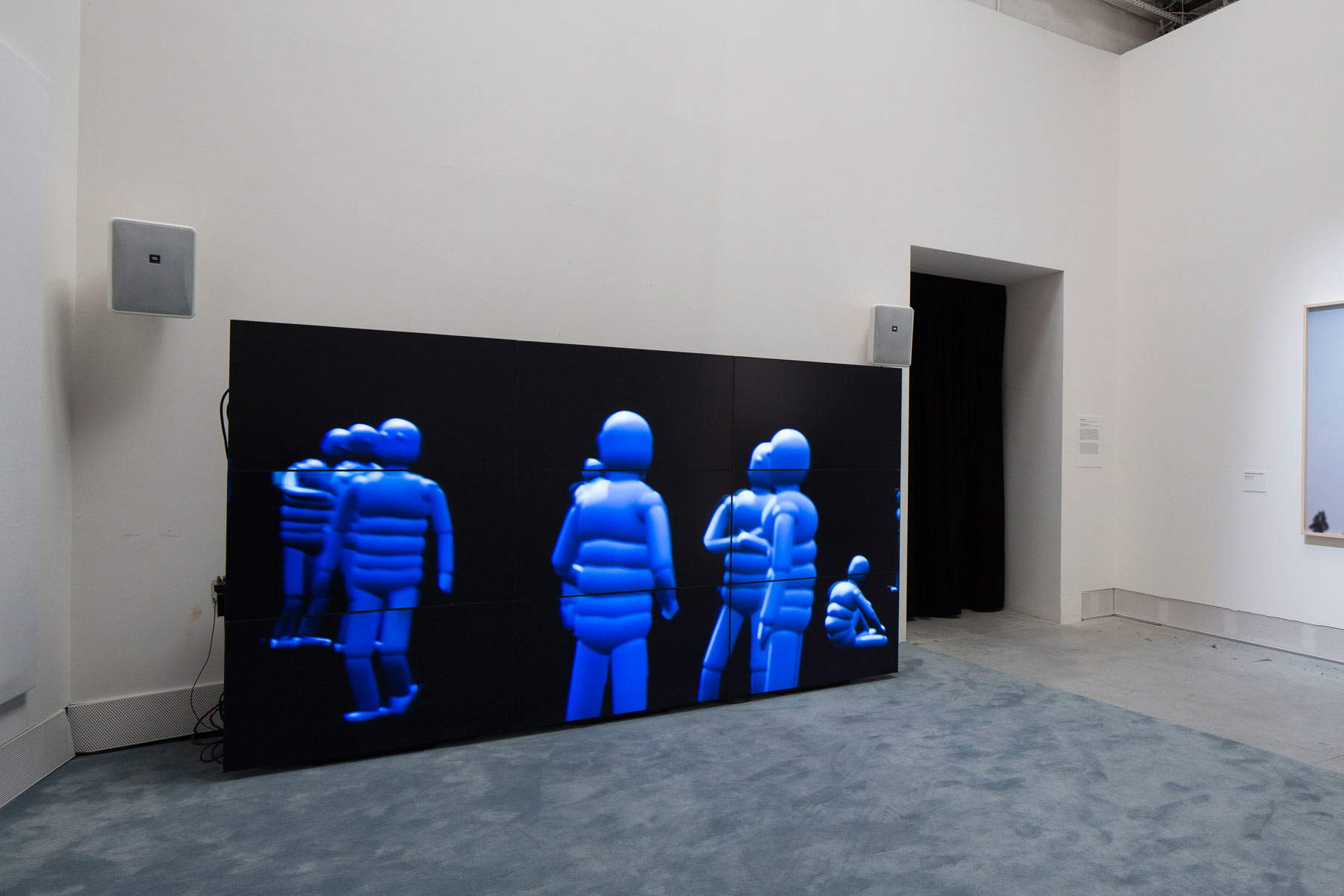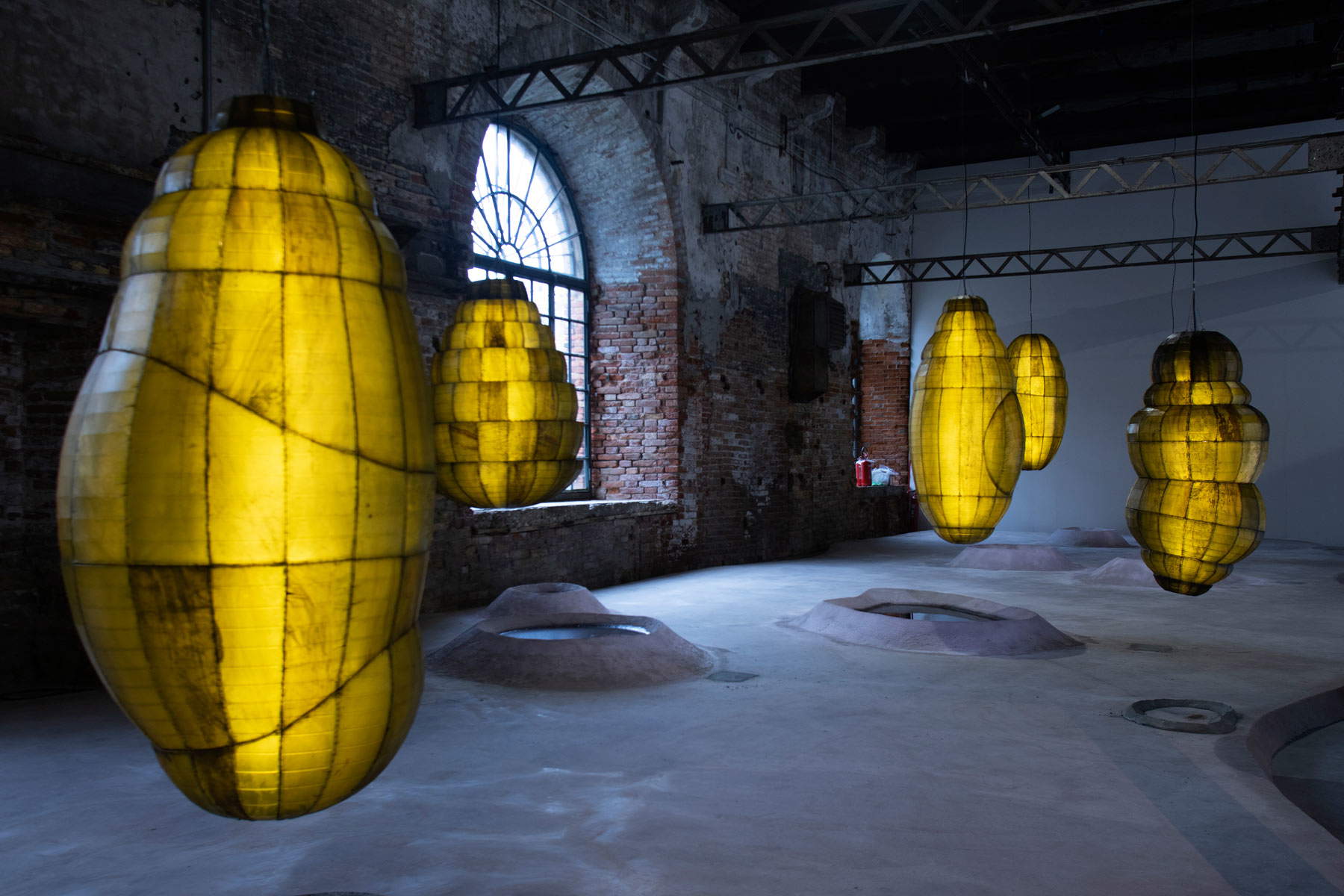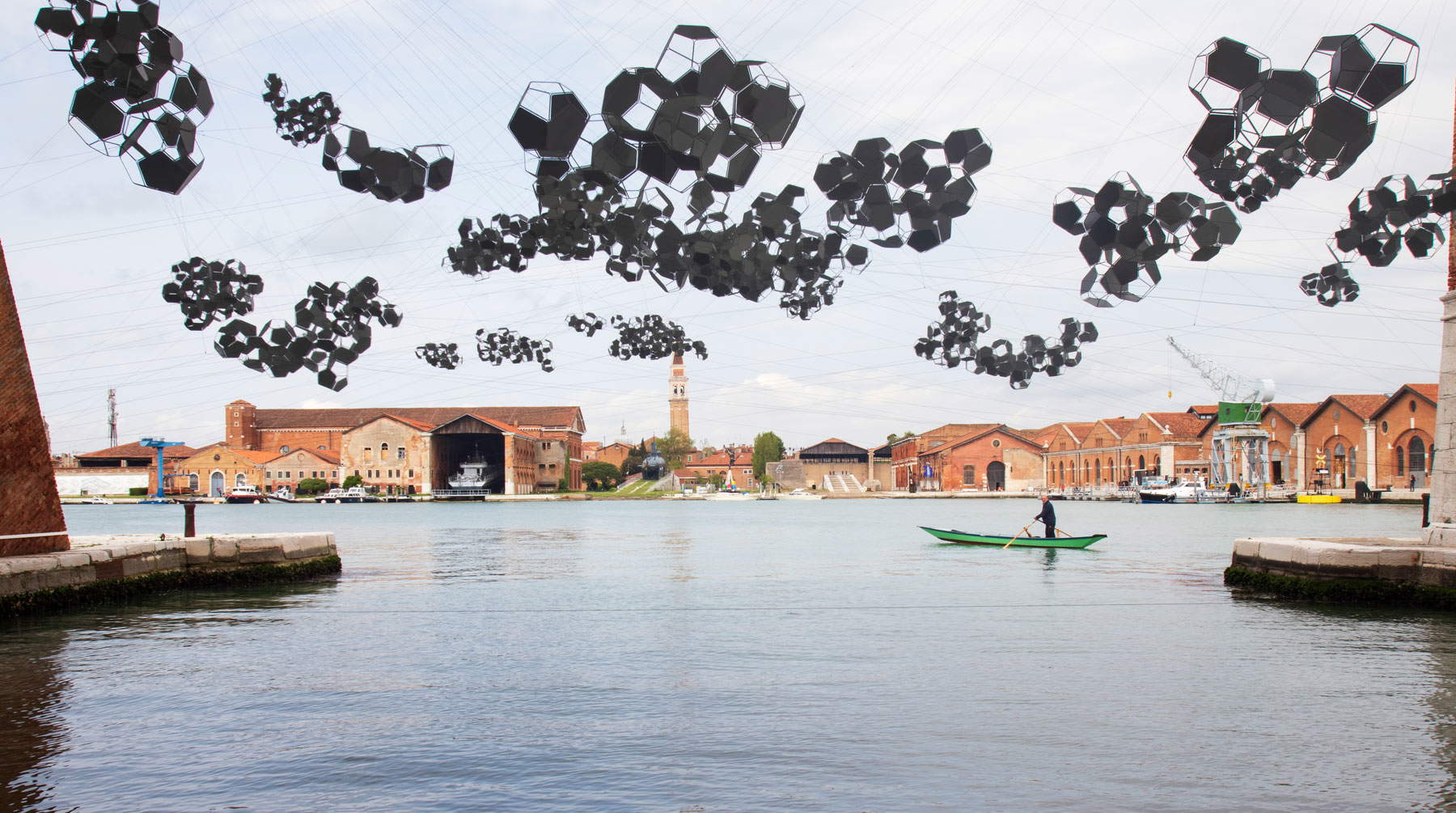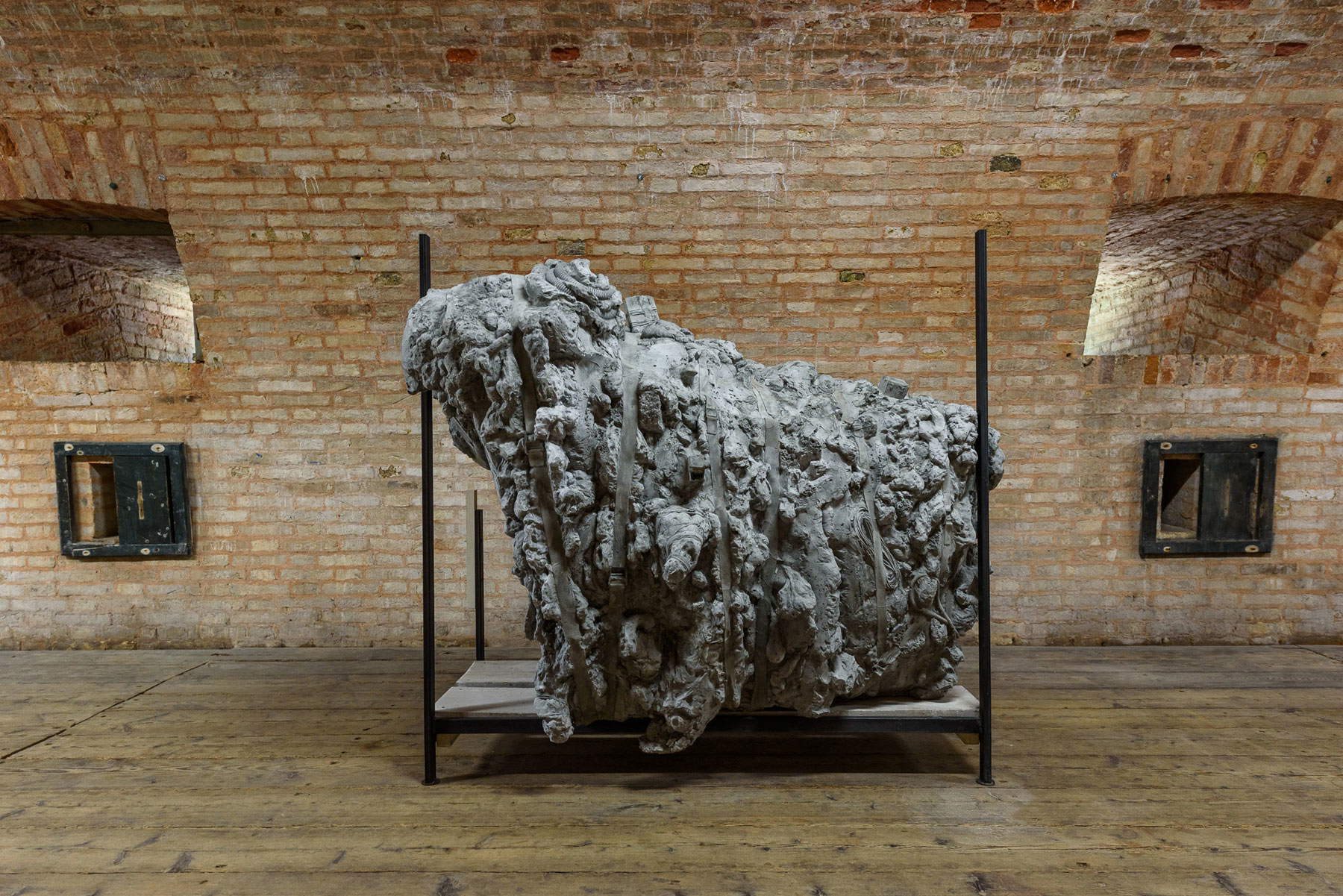by Cristina Principale , published on 13/10/2019
Categories: Exhibition reviews
/ Disclaimer
Review of the 2019 Venice Biennale, "May you live in interesting times," in Venice, various venues, through Nov. 24, 2019.
You can visit or return to explore the Venice Art Biennale 2019 again for the next month and a half, except on Mondays, every day until Nov. 24. In the first five of the opening of this fifty-eighth edition, there have been numerous insights that press and critics have addressed to the choices of New York curator Ralph Rugoff and about the more or less complexity of the proposals.
The hot topics already in May and during the summer of the Biennale were mainly the triumph of performance (yet another Golden Lion for a performance project, Sun & Sea (Marina) by the Lithuanian pavilion, after the one awarded to the German pavilion in 2017); also, the stylistic slant of our Italian pavilion, curated by Milovan Farronato and centered on the concept and figure of the labyrinth; certainly then, the massive presence of New Media Art, with all the resistance it entails; and last but not least, the system of artists and related gallerists/collectors involved in the International Exhibition, the full-bodied core of Rugoff’s proposal. Other aspects have also been discussed and written about, of course, though on those mentioned a greater duality of views seems to have been created, between absolute detractors and staunch supporters.
On the other hand, it is around the duality that this Biennial was intended to be built: in addition to the well-established binary format of the Exhibition and the 89 National Pavilions side by side, this year even the exhibition itself has been divided into two parallel units, the so-called Proposal A in the Arsenale and Proposal B in the Giardini , with the 79 2019 artists, all of whom are co-equals and called upon to think up works for the two different architectural and exhibition contexts, in common. Where until now the two institutional venues were understood as one the continuation of the other in a single ideal path of visit, today they constitute a double and bi-univocal insight into the production of each of the selected, considering also their reduced number (in 2017 there were 120 artists). Two paths in dialogue that induce an interesting exercise in formal connections and relationships. Experiencing the parts, in the curator’s intentions, allows for an echo of practices and research, given also that no overall narrative or overarching theme is suggested to unite them. Compared to previous ones, the spectrum of themes touched upon in this Biennial hybridizes and amplifies their ’voice’. And it demands a response. The involvement required of the public is evident in the texts by President Baratta and Rugoff, contained in the beautiful catalog designed by Mues Design London: "[...] The works are collaborative transactions. The artist sets the initial parameters of this process, but it is the viewer’s reactions and associative interpretations that continue its development. [...] The meanings that arise are rooted not so much in the objects as in the conversations. What matters most in an exhibition is not what is exhibited, but how we can then use the experience to look at everyday reality."
 |
| La Biennale di Venezia 2019, Arsenale. Ph. Credit Finestre Sull’Arte |
 |
| La Biennale di Venezia 2019, International Exhibition, Arsenale. Ph. Credit Finestre Sull’Arte. |
 |
| La Biennale di Venezia 2019, International Exhibition, Arsenale. Ph. Credit Finestre Sull’Arte. |
 |
| La Biennale di Venezia 2019, International Exhibition, Giardini. Ph. Credit Finestre Sull’Arte. |
 |
| La Biennale di Venezia 2019, International Exhibition, Giardini. Ph. Credit Finestre Sull’Arte |
As much as there is no shortage of imaginative spaces, it is to reality that the contemporary art exhibited here is bound, even augmented art. It is of our days and the immediate future that the entire exhibition project, encapsulated under the title May You Live In Interesting Times, tells. Full-bodied are the valences of this locution and its uncertain history, mistaken in the twentieth century as an ancient Chinese curse and quoted by Western authors and politicians in terms of the threat to public safety; it has been adapted with a certain ambiguity to our dishonest age and rehabilitated as an augury in this Biennial so sensitive to the spirit of the times. We will keep in mind, taking a partial meaning from it, that ’interesting times’ carries messages such as denunciation and challenge.
The proposed selection does not shy away from confronting the current dark history in an attempt to rewrite it in color, taking gigantic nodes, such as environmental, social and political degradation on a universal level, and conversing about them with a multiplicity of expressions. In several cases countering such threats with works of proportionately gigantic size. Queen in fact of the Exhibition seems to be the installation and large-scale, declined by authors with different departures and landings.
Electing one work among others, Barca Nostra by Swiss Christoph Büchel (Basel, 1966) describes the social function of art pushed by the curatorial project: it is the wreck recovered from the Sicilian Channel, where one of the Mediterranean’s most mournful shipwrecks occurred in 2015. It is necessary to cross the Corderie and Artiglierie of the Arsenale in the direction of Giardino delle Vergini to encounter it. After this vision, other works will also be revealed in their further possible purposes, and a process of reconfiguration will be set in motion.
Arriving in the central pavilion of the Giardini, the Wall by Mexican Teresa Margolles (Culiacán, 1963), which was given a special mention by the International Jury, will resonate in the same way. A work from 2010 and exhibited in Venice in 2011, it assembles pieces of concrete taken from Ciudad Juárez riddled with bullets and enclosed by barbed wire, in front of which the tragic episodes to which it symbolically alludes were actually consumed.
There is something to be said for the fact that the prizes awarded this year speak volumes and perimeter the areas Rugoff premised: “the Exhibition emphasizes art that stands between categories, questioning the reasons for our thinking in categories.” The Golden Lion for Best Participating Artist went to American Arthur Jafa (Tupelo, Mississippi, 1960) for his look at the subject of race, and the other special mention to Nigerian Otobong Nkanga (Kano, 1974), for her poetic interpretation of, precisely, her country’s environmental-socio-political dramas.
 |
| Christoph Büchel, Barca Nostra (2018-2019; wreck of the April 18, 2015 shipwreck). Ph. Credit Andrea Avezzù |
 |
| Teresa Margolles, Ciudad Juárez Wall (2010; concrete blocks). Ph. Credit Francesco Galli |
 |
| Works by Arthur Jafa at the 2019 Biennale. Ph. Credit Andrea Avezzù |
 |
| Work by Otobong Nkanga at the 2019 Biennale. Ph. Credit Italo Rondinella |
Not being able to mention them all, however, in an overview it will be said that the “objects” named by Rugoff (those that should generate conversations) are so much rejected artifacts, to intend it in the manner of Jimmie Durham (Houston, Texas, 1940), the American Golden Lion for Lifetime Achievement 2019, but also “treasures,” to involve instead the Italian Lara Favaretto (Treviso, 1973) another protagonist of this edition. Well next to a lot of painting, sculpture and photography, objects in the terms of the ready-made will be seen manifold.
Again following the reasoning offered by Rugoff, “intelligent artistic activity requires the creation of forms that highlight what the forms themselves conceal and the functions to which they fulfill.” Sigh of relief and one inevitably disposes oneself with curiosity for the visit....
Striking back is the 2009 “moving gate that swings from one side of the wall to the other, breaking it” by Indian artist Shilpa Gupta (Mumbai, 1976), which like others has become iconic content, representative of this edition. A moving installation that relies on the aesthetic power of the animate/inanimate contrast, which possesses on the surface a formal and functional recognizability, familiar in its mechanical and everyday dimension, which, however, if observed by not lingering in an attitude of simplification, ends up becoming profoundly perturbing and rich in concept. The artist through the proper elements of a custodial structure effectively explores the physical and ideological existence of territorial, ethnic-religious limits and boundaries, giving the gate an almost anthropomorphic appearance. In sensory engagement, the alienating aspect that the kinetic properties of this work provoke unites it with some others. The panels by Frenchman Antoine Catala (Toulouse, 1975), the cow by Chinese Nabuqi (Ulanqab, 1984), the spectacular robot by his compatriots Sun Yuan & Peng Yu (Beijing, 1972; Heilongjiang, 1974), spread like viral images over the months of the exhibition but which it will certainly be good to experience in person.
You will find them in relation to, and alternating with, sound environments, of which Lebanese Tarek Atoui (Beirut, 1980) also gives us an essay, and others tangibly immersive, such as the corridor by Japanese Ryoji Ikeda (Gifu, 1966). All the way to the virtual “living environments” of a shortlist of other artists, for example, the American Ian Cheng (Los Angeles, 1984) and the French Dominique Gonzalez-Foerster (Strasbourg, 1965), who lead us to the heart of another important conversation, that on artificial realism. Thought also adapts to the formless and resorts to this potential when the aesthetic component meets the virtual and transdisciplinary experimentation.
 |
| Works by Jimmie Durham at the 2019 Biennale. Ph. Credit Andrea Avezzù |
 |
| Lara Favaretto, Thinking head (2018; mixed media). Ph. Credit Andrea Avezzù |
 |
| Shilpa Gupta, Untitled (2009; gate moving from side to side breaking the wall). Ph. Credit Francesco Galli |
 |
| Antoine Catala, It’s over (2019; nine panels, pumps, pipes, controller box). Ph. Credit Francesco Galli |
 |
| Nabuqi, Do real things happen in moments of rationality? (2018; mixed media). Ph. Credit Finestre Sull’Arte |
 |
| Sun Yuan & Peng Yu, Cant Help Myself (2016; mixed media). Ph. Credit Francesco Galli |
 |
| Tarek Atoui, Quote from the Reserve Collection (2019; mixed media). Ph. Credit Francesco Galli |
 |
| Ryoji Ikeda, spectra III (2008; LED tubes, white laminated wood panels). Ph. Credit Francesco Galli |
 |
| Ian Cheng, Life After BOB: First Tract (2019; vector drawings printed on duratrans, lightbox). Ph. Credit Andrea Avezzù |
 |
| Dominique Gonzalez-Foerster with Joi Bittle, Cosmorama (2018; diorama). Ph. Credit Francesco Galli |
The broad reflection on the identity of the body, of which so many works report through traditional media and the multi-beaten modes of self-portraiture and storytelling, is matched by the amount of borderline works entrusted to technology and science. Wanting to involve just a few: from the computer-generated and 3D graphics of Canadian Jon Rafman (Montréal, 1981) and U.S.-based Avery Singer (New York, 1987) to the creations of Korean Anicka Yi (Seoul, 1971) investigating new developments between organic life forms and artificial intelligence.
One of the visual and emotional cornerstones concerns the biologization of the machine. Underlying them all, however, is the same search for identity, singular and plural. Framing these conversation pieces of which one is a part by visiting the Biennial, another of the giant nodes, not far from the Machine Learning theme: around, there where the other dualities put on display organic/synthetic information/disinformation play out, lies #communication, tout court and in the implications related to security/surveillance, authority/control. Again among others, look and listen to the message of Jordanian Lawrence Abu Hamdan (Amman, 1985).
 |
| Jon Rafman, Disasters Under The Sun (2019; HD video, color, sound) |
 |
| Works by Avery Singer at the 2019 Biennale. Ph. Credit Italo Rondinella |
 |
| Anicka Yi, Biologizing the Machine (tentacular trouble) (2019; algae, acrylic, LED, animatronic moths, water, pumps). Ph. Credit Italo Rondinella |
 |
| Lawrence Abu Hamdan, This whole time there were no land mines (2017; eight looped videos with sound). Ph. Credit Italo Rondinella |
 |
| Haris Epaminonda, Vol. XXVII (2019; mixed media). Ph. Credit Nick Ash |
 |
| Tomás Saraceno, Aero(s)cene: When breath becomes air, when atmospheres become the movement for a post fossil fuel era against carbon-capitalist clouds (2019; mixed media). Ph. Credit Italo Rondinella |
 |
| Marysia Lewandowska, It’s about time / It was about time (2019). Ph. Credit Andrea Avezzù |
 |
| Ludovica Carbotta, Monowe (The powder room) (2019; mixed media). Ph. Credit Andrea Avezzù |
All the more remarkable is the contribution of video-cinema in this Exhibition. The contribution in both venues of Cypriot Silver Lion Haris Epaminonda (Nicosia, 1980) opens up considerations that demand answers and initiate a conclusion.
Many are collective projects, in co-partnership or made by networking and cultural references, be they quotations or pastiches. Does Durham’s Black Serpentine, exhibited here, not resonate with The Column 2013by Albanian Adrian Paci, which in turn evokes We the People 2011-2013 by Vietnamese Danh Vo?
To put it like Rugoff, those choices would seem on the whole to be works of “deep hospitality” that welcome interpretations and the critical approach of the well-intended public. Be careful not to miss the outdoor installations, isolated from the indoor displays: the seven at the Arsenale and the five at the Giardini, including those by Argentine Tomás Saraceno (San Miguel de Tucumán, 1973). Same said for the Special Projects: by the Polish naturalized Englishman Marysia Lewandowska (Szczecin, 1955) at the Pavilion of Applied Arts in the Arsenale and by the Italian Ludovica Carbotta (Turin, 1982) at Forte Marghera, going off the path, from A and B.
Warning: the translation into English of the original Italian article was created using automatic tools.
We undertake to review all articles, but we do not guarantee the total absence of inaccuracies in the translation due to the program. You can
find the original by clicking on the ITA button. If you find any mistake,please contact us.

